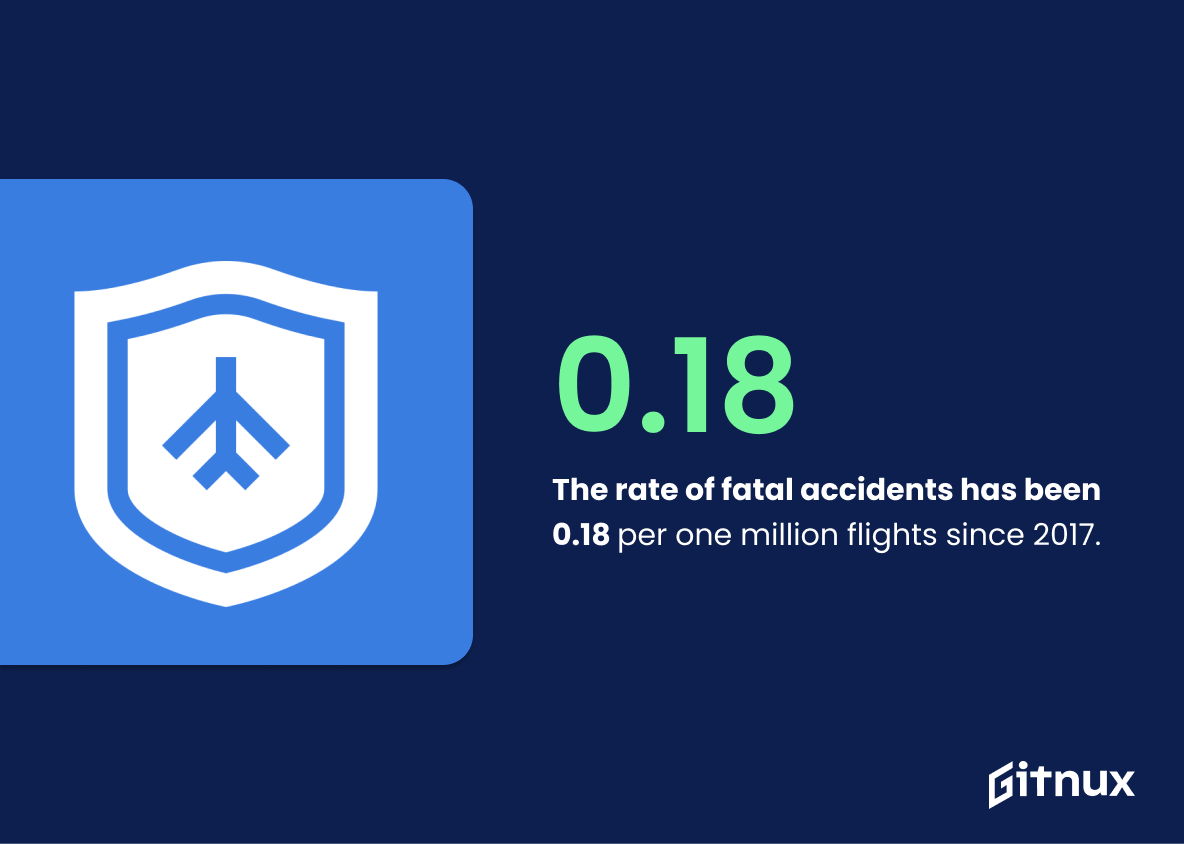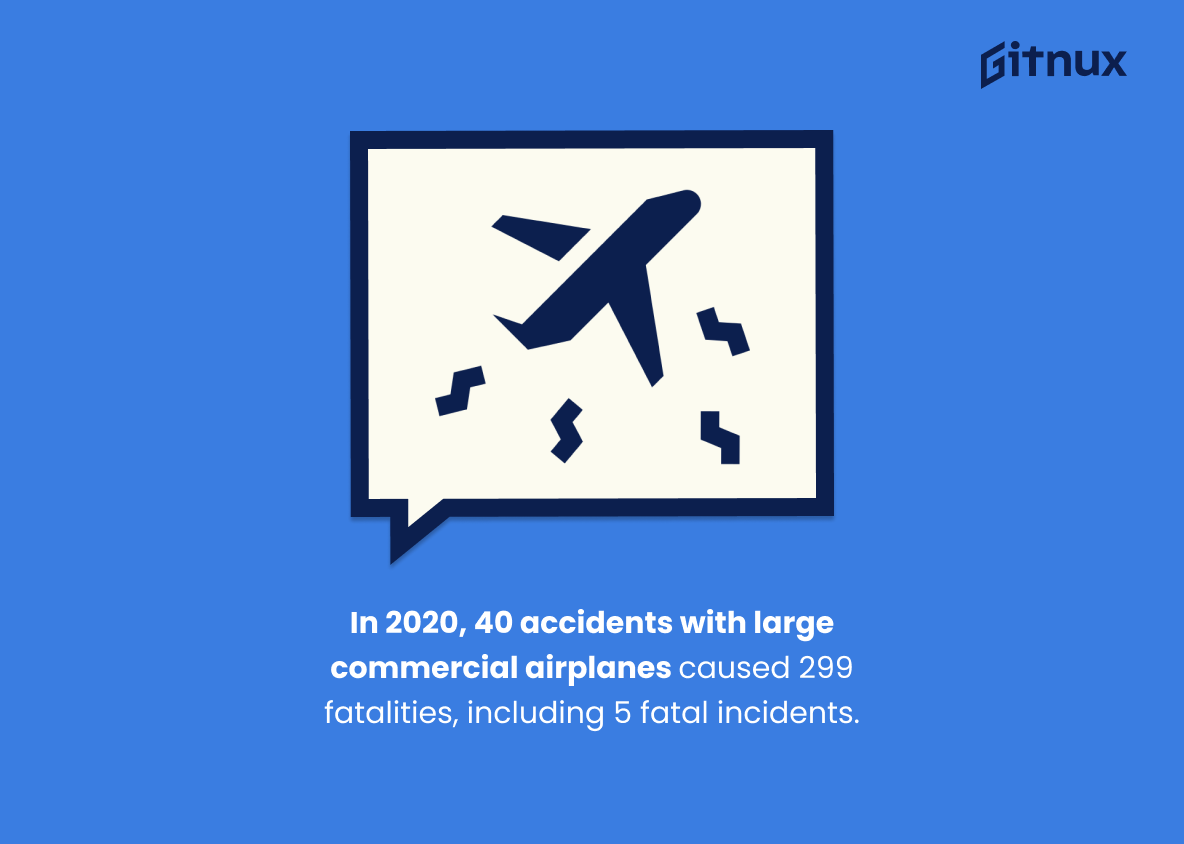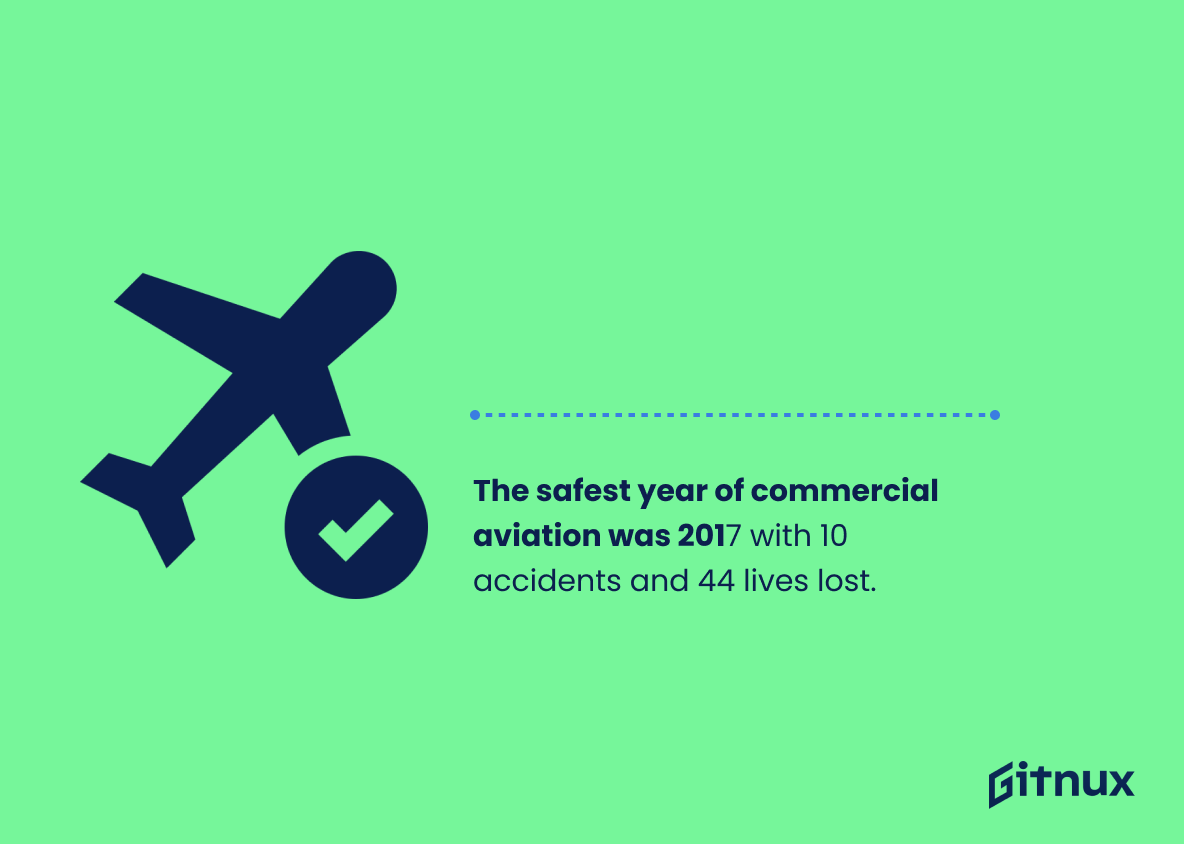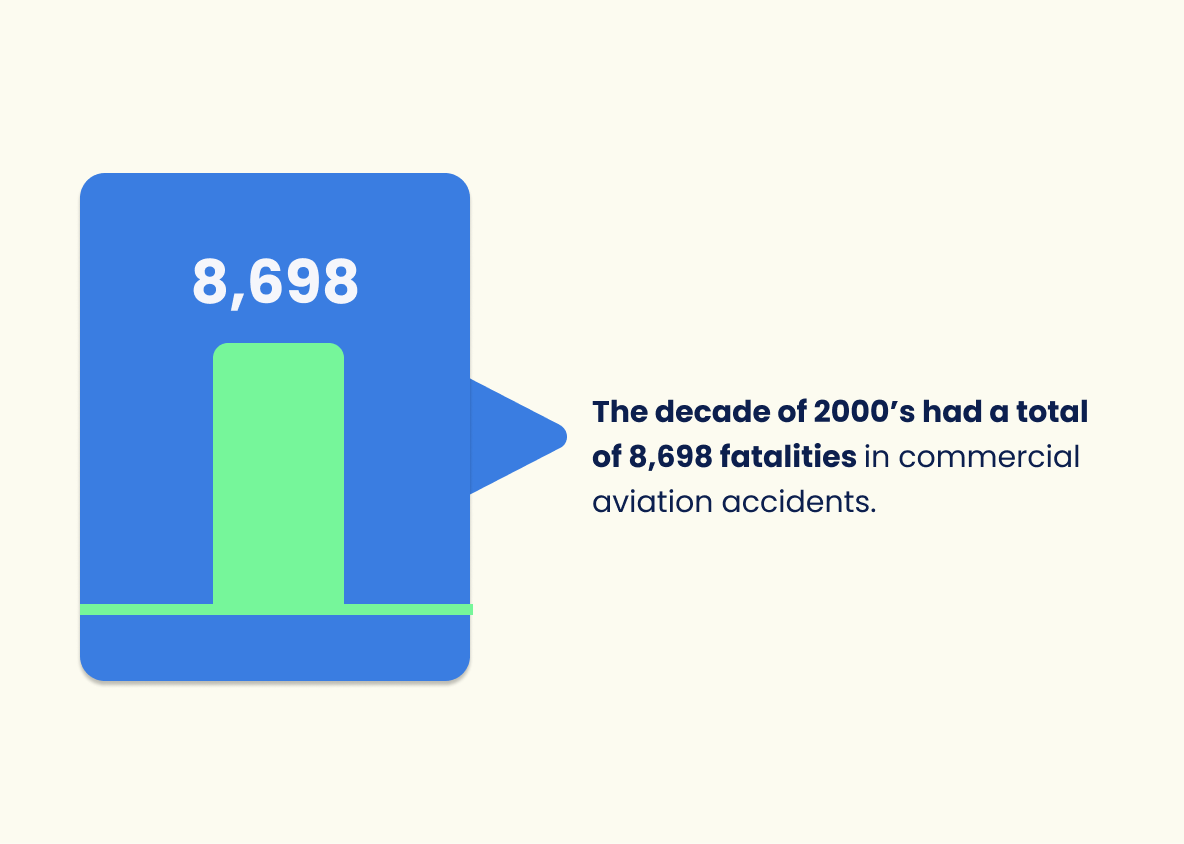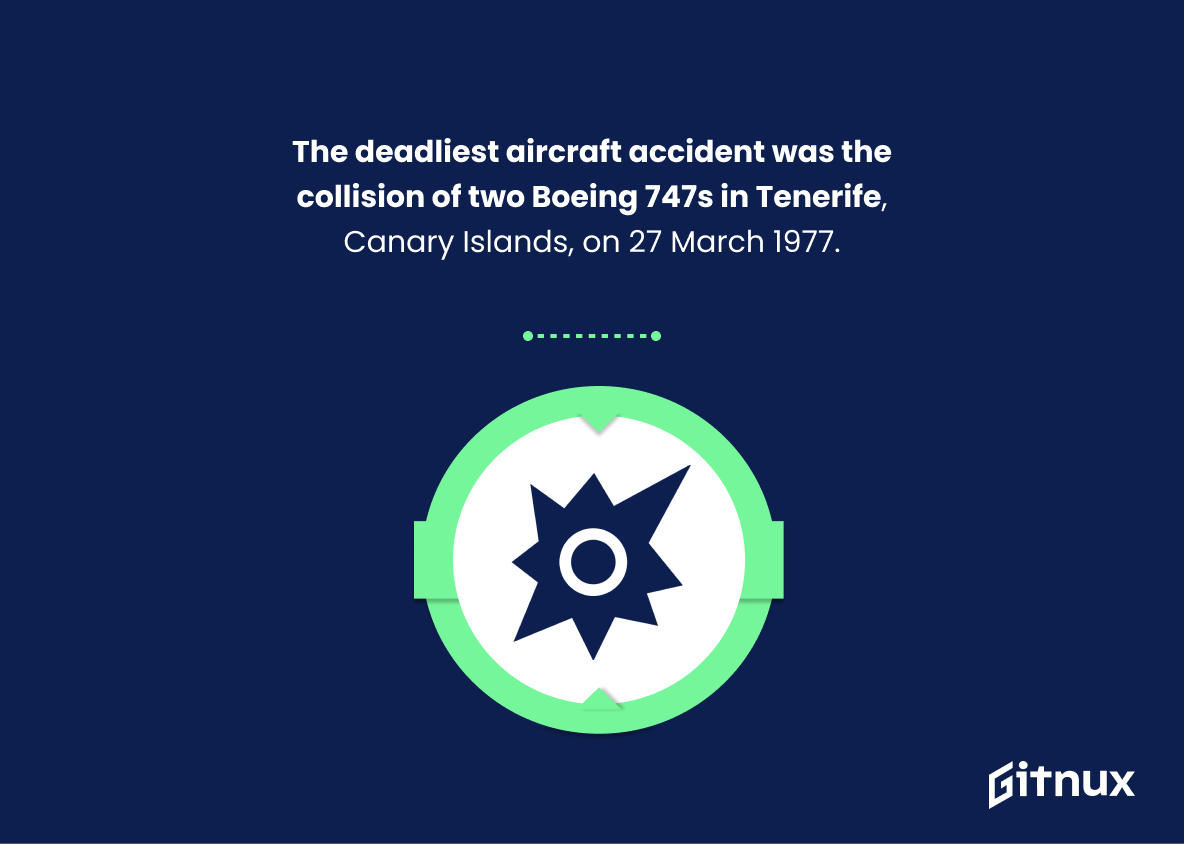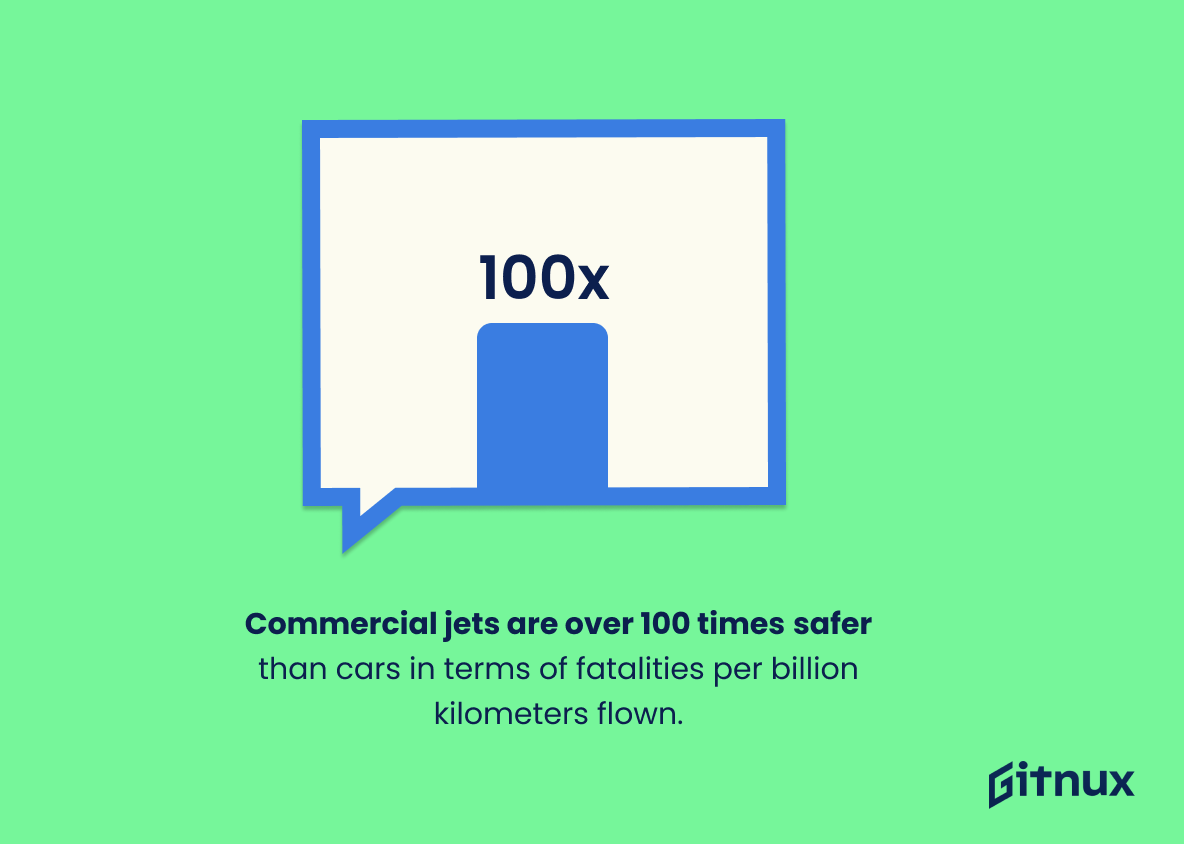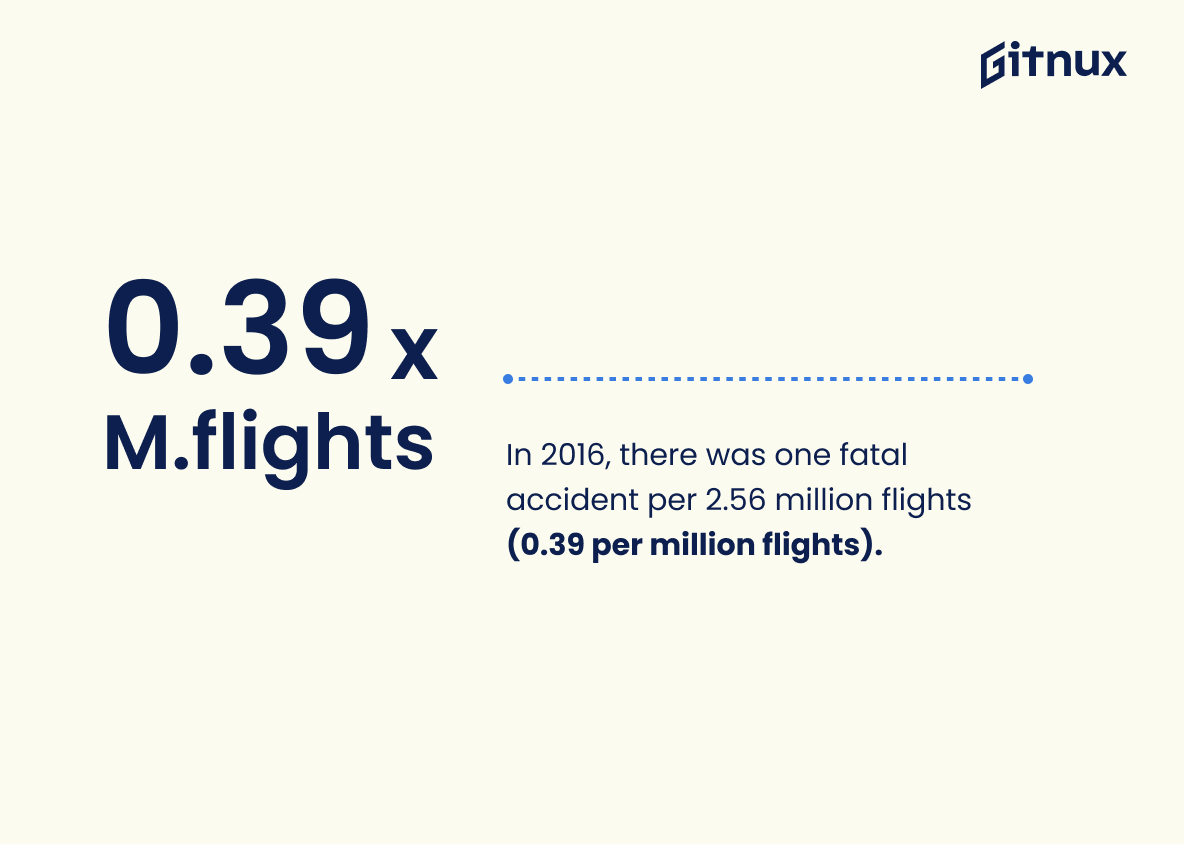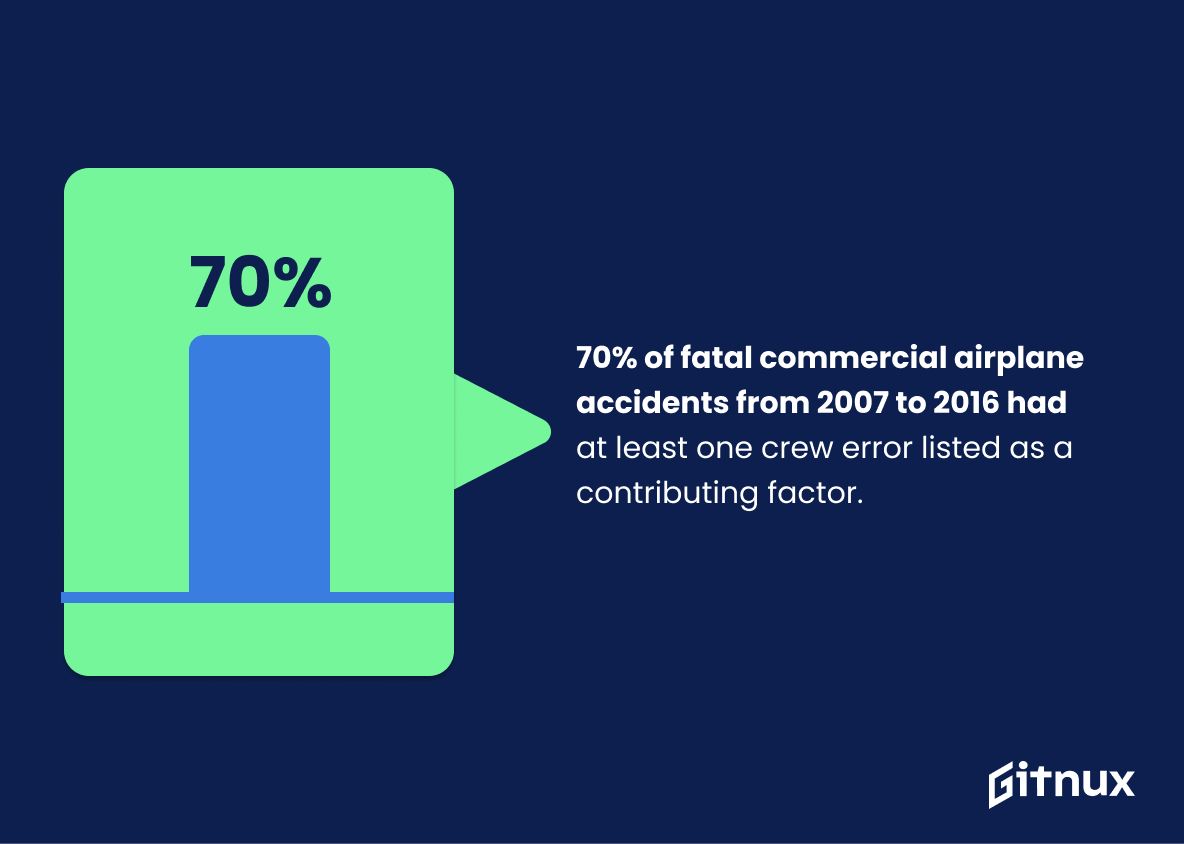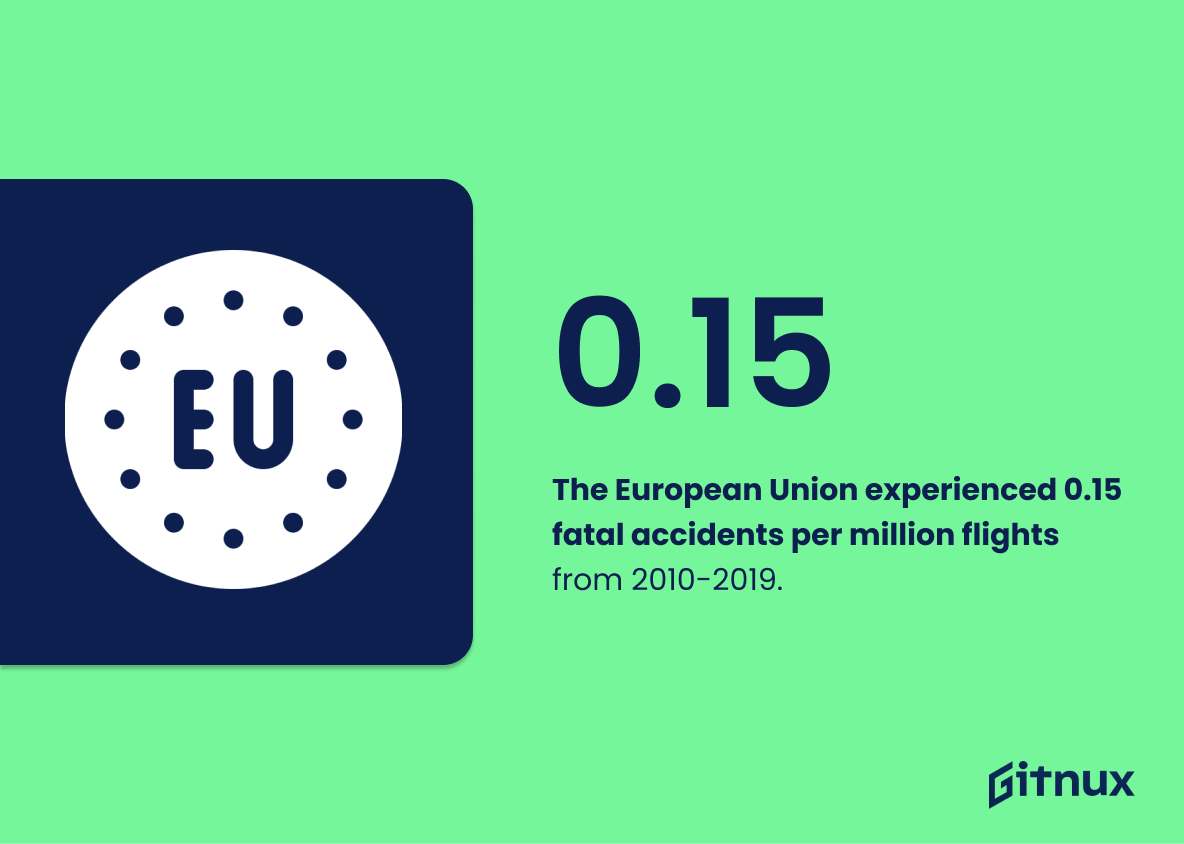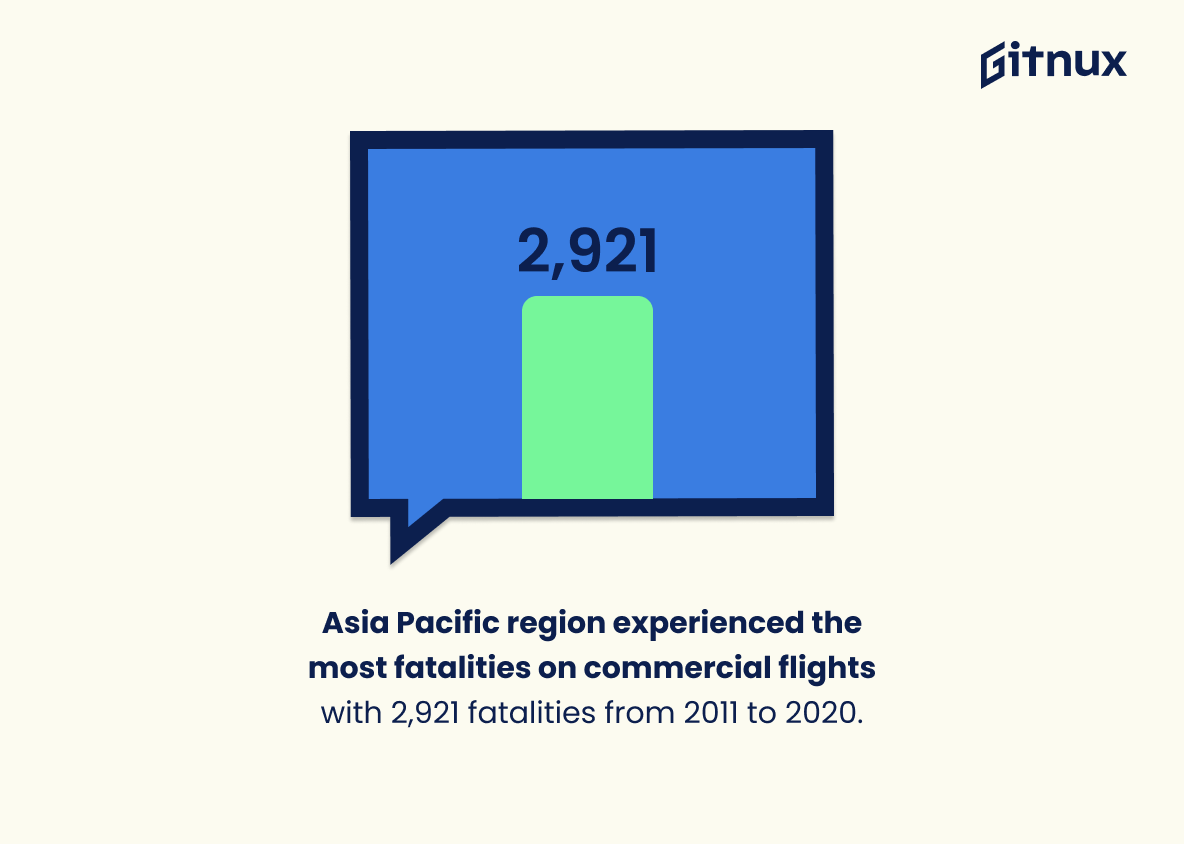The intricacies of aviation can often be obscured behind numbers, charts, and percentages. Although flights are remarkably safe, with a statistically minuscule chance of accident, commercial plane crash statistics continue to intrigue, concern, and astound us.
This blog post aims to demystify the myriad data surrounding this ever-evolving topic, providing an insightful examination of trends, safety measures, and recent developments. By diving deep into these crucial figures, our goal is to educate readers, dispel common misconicceptions, and build a comprehensive understanding of commercial plane crash statistics.
The Latest Commercial Plane Crash Statistics Unveiled
The rate of fatal accidents has been 0.18 fatal accidents per one million flights since 2017.
In the vast sky of Commercial Plane Crash Statistics, the rate of 0.18 fatal accidents per one million flights since 2017 stands as a beacon of understanding. It punctuates not only the sheer volume of air travel, but also the rarity of fatal incidents. This quantitative measure punctures the common fear-mongering myths around air travel safety, underscoring the reality, that despite the abundant hours of flights crisscrossing the globe daily, fatal accidents are rarer than commonly perceived.
Moreover, this concrete figure offers readers a contextual anchor, a piece of reliable reference enabling valuable comparison over time and across different airline carriers. Amidst the turbulence of statistics, this provides readers with a clear and concise sky-map to navigate the complex, vast expanse of commercial aviation safety data.
In 2020, there were 40 accidents involving large commercial airplanes, five of which were fatal, causing 299 fatalities.
In the kaleidoscope of Commercial Plane Crash Statistics, the chilling revelation jumps out that during 2020, large commercial airplanes were involved in 40 accidents, culminating in five fatal incidences and 299 lost souls. This profoundly unsettling figure undeniably casts its shadow over our perception of airline safety, punctuating the ongoing dialogue about the imperative need for rigorous aviation safety protocols and stringent regulations.
It unfurls an urgent conversation starter on how safety measures can be amplified to curtail such tragedies, stamping a stark reminder of the sheer significance of meticulous aircraft maintenance, aviation training, and safety checks in the complex, dynamic world of commercial aviation, where human lives are precariously balanced on the wingtips of technological advancement.
The safest year of commercial aviation was 2017 with 10 accidents and 44 lives lost.
Highlighting the 2017 landmark draws an encouraging picture of the strides made in commercial aviation safety. The impressively low figures, both in terms of accidents and human toll, serve as a testament to the relentless efforts by experts to minimize risks involved in air travel.
In a landscape frequently shrouded with fears of catastrophic crashes, these numbers shine as symbols of assurance. It hammers home the point that immense progress in aviation technology, enhanced safety measures, rigorous training of staff and strict regulatory frameworks are steadily translating into safer skies for millions of passengers around the globe.
The decade of 2000’s had a total of 8,698 fatalities in commercial aviation accidents.
Reflecting on the rather grim number of 8,698 fatalities during the 2000’s paints a significant picture of aviation risk during that period. It acts as a stark reminder of the volatility and inherent risks associated with civil aviation. When interwoven in a blog post about Commercial Plane Crash statistics, this figure illuminates not just the cost in human lives, but also offers insights into safety regulations, engineering integrity and crisis management practices during that era. Furthermore, this data serves as a benchmark for gauging the progress in the aviation industry through subsequent decades, highlighting advancements in airline safety and industry regulations.
The deadliest aircraft accident was the collision of two Boeing 747s in Tenerife, Canary Islands, on 27 March 1977.
Shedding light on the horrific incident of Tenerife in 1977, it sends a stark reminder infiltrating the essence of commercial plane crash statistics. This catastrophic event, where two Boeing 747s tragically intersected paths, sits at the peak of aviation disasters, thus, providing a crucial reference point.
By illuminating the severity of such crashes, it essentially underscores the importance of safety measures, continual improvements in aviation technology, and rigorous training of flight crews. This statistics thus serves as an indicator of the potential magnitude of aviation accidents, all the while underlining the progress that air travel has made over the years in its relentless pursuit of safety.
As of 2022, Boeing 737 series have been involved in the most accidents among commercial aircraft types.
Showcasing the Boeing 737 series’ crash statistics, as the commercial aircraft type involved in the most accidents as of 2022, underscores the high-risk element associated with this model. From a crash analysis perspective, this information is instrumental, providing a focal point for studying patterns, isolating problem areas, evaluating safety measures, and drawing comparisons with other aircraft types.
Furthermore, in the expansive conversation about commercial plane crash statistics, this statistic serves as a stark reminder about the urgent need for continuous innovation and stringent checks in aircraft design and operating procedures to minimize risk and elevate travel safety.
In terms of fatalities per billion kilometers flown, a person is more than 100 times safer on a commercial jet than in a car.
Venturing into the vast territory of Commercial Plane Crash Statistics, this compelling statistic enhances understanding of the relative safety of air travel compared to road travel. It artfully illuminates the reality beyond the sensational media and amplifies the reassuring fact that, despite the occasional tragedies that capture headlines, commercial aviation remains superbly safe over enormous distances.
By casually strolling through billions of kilometers, it boldly asserts the safety margins we seldom pause to appreciate. This statistic essentially holds a beacon of comforting assurance, elucidating that the fear of air travel is largely disproportionate to its actual risks.
In 2016, there were 0.39 fatal accidents per million flights, a statistic that equates to one fatal accident for every 2.56 million flights.
Painting a picture of the omnipresent sky highways, that statistic serves as an anchor, grounding the potential fear of flight in solid, reassuring evidence. It balances the grim tales of rare aviation tragedies with the comforting fact that for every 2.56 million flights, there’s likely to be only one fatal accident.
While each crash inevitably congregates media attention, these numbers remind us that the odds are overwhelmingly in favor of safety. Demonstrably, even in 2016 – a year specified for comparison – the terror inspired by the thought of plane crashes is largely disproportionate to reality. It’s a tangible illustration of risk in numbers, spelling out in raw data the high degree of safety in commercial aviation.
70% of fatal commercial airplane accidents from 2007 to 2016 had at least one crew error listed as a contributing factor.
Highlighting a statistic like ‘70% of fatal commercial airplane accidents from 2007 to 2016 had at least one crew error listed as a contributing factor,’ seizes anyone’s attention as it unveils a human element in an area mostly assumed as technically determined. This revelation doesn’t just underline the vitality of human resources in commercial aviation but also punctuates that there may potentially be a significant margin for improving safety.
It establishes the importance of rigorous crew training, policy implementation on crew rest and shift timings, attention to mental health, and deeper investigations into the accidents due to ‘crew error.’ Moreover, this statistic gives us a room to rethink over strategies and measures to mitigate preventable mistakes. This, in turn, can usher a paradigm shift in how we perceive and tackle commercial plane crashes.
11% of global plane crashes occurred during the cruise phase of the journey in 2019.
Highlighting the statistic that 11% of global plane crashes occurred during the cruise phase of the journey in 2019, we steer our attention to an unanticipated revelation. Often considered as the safest phase, cruise flight, where the aircraft reaches its maximum altitude, implicates certain concerns. A surprising proportion, 11%, prompts us to question the in-flight safety measures.
It induces a renewed focus on the efficiency of operating crew, aircraft maintenance and inculcating technology that can aid in preventing such unfortunate incidents. This unexpected data nugget not just points to a potential safety loophole, but also sets the platform for further debate in this blog post about Commercial Plane Crash Statistics.
The European Union experienced 0.15 fatal accidents per million flights from 2010-2019.
Delving into the realm of commercial plane crash statistics, drawing attention to the figure – ‘The European Union experienced 0.15 fatal accidents per million flights from 2010-2019’, paints a vivid picture of the safety landscape in aviation. This number offers a tangible insight into the risk factor associated with air travel, putting into perspective the rarity of fatal incidents, particularly within European airspace.
It gives readers — travelers, aviation enthusiasts, or merely curious minds — a barometer to gauge the implications of hopping on an airplane in Europe. More crucially, this illuminates the impressive safety record of European aviation industries, underscoring the effectiveness of stringent safety measures and stringent regulatory oversight in mitigating air travel risks in the past decade.
Asia Pacific region experienced the most fatalities on commercial flights with 2,921 fatalities from 2011 to 2020.
Delving into the depths of commercial plane crash statistics, one data point leaps forward: painting a stark picture of aviation safety disparities, the Asia Pacific region tops the chart with a startling 2,921 fatalities between 2011 and 2020. Unraveling the gravity of this revelation, such a statistic transforms our understanding of the geographical influence on aviation safety, compelling us to probe further. It forms the beating heart of comprehensive risk assessment for travelers and airlines alike, stirring an in-depth analysis of regional flight safety protocols, conditions, and regulations.
This illustrious spotlight on the Asia-Pacific region’s mammoth share of fatalities becomes a springboard for rigorous research and informed conversations on implementing stringent safety measures. It drives home the ongoing quest for aviation safety and places an undeniable emphasis on the life-altering impact of plane crashes, sculpting a more profound understanding of the narratives beneath commercial plane crash statistics.
In the past five years, airlines in Sub-Saharan Africa had an accident rate of 2.39 per one million departures.
The dramatic statistic showcasing Sub-Saharan Africa’s airline accident rate of 2.39 per one million departures over the past five years acts as a raiment of reality, exposing the critical state of aviation safety in the region. This potent figure, woven into the fabric of our blog post, not only magnifies the relative risk of air travel in that part of the globe, but also emboldens our comparative analysis of global commercial plane crash statistics.
It compellingly underscores the urgency for stringent safety protocols and robust oversight in the region’s aviation sector, thereby enriching our discussion on the various factors influencing airplane crash statistics worldwide.
54% of global plane crashes occurred during the approach and landing phases of the journey in 2019.
Peering into this synthesized figure, one can’t help being startled. It paints a rather vivid picture of 2019’s global plane crashes, with a staggering 54% happening during approach and landing – the final chapters of a flight. This numeric revelation is imperative for our blog post on Commercial Plane Crash Statistics as it nudges readers towards a keener understanding of air safety.
Not only does it indicate a likely period of vulnerability in a flight’s trajectory, but also it raises questions regarding procedures, training, equipment, and potentially, weather conditions during those fateful moments. Therefore, any effective discourse aiming to dissect plane crashes must consider this statistic in their exploration. After all, it’s these numbers that wind up guiding future cautionary tales, pilot training programs, and technological advancements in the continuous pursuit of safer skies.
From 1997 through 2021, airlines in North Asia had the lowest accident rate of 0.11 per million departures.
In the realm of commercial plane crash statistics, one particular fact that truly stands out is the record of North Asian airlines. Replicating a feat that is no short of an aviation wonder, they’ve achieved the lowest accident rate from 1997 to 2021, with just 0.11 incidents per million departures. This significant statistic not only showcases their remarkable emphasis on safety standards, but also bestows upon them a comforting lead in the global aviation safety charts.
For an industry where safety is paramount, this dramatic statistic provides compelling insight into the possible influence of geographical location, superior training, or stringent regulatory practices worth exploring and learning from across the globe.
The B737-200, a model introduced in the 1960s, was involved in 166 accidents, the highest for any commercial aircraft model.
Highlighting the high occurrence of accidents involving the B737-200 model underscores a potentially critical concern in the sphere of commercial aviation safety. A data point like this sets the field for profound discussions regarding historical manufacturing issues, systems design, operational safety standards and necessary improvements. Utilizing this statistic delineates a clear sense of priority, emphasizing that past performance, even of popular models, must be rigorously reviewed and learnt from to shape safer aviation trajectories for the future.
Over the last five decades, the commercial aviation industry saw a decrease in the number of fatal accidents and fatalities, despite an increase in flights.
Highlighting this statistic underscores a powerful testament to the industry’s unyielding commitment to enhancing safety measures and protocols. The continued decrease in fatal accidents and fatalities over an extended period, despite increasing flight numbers, embeds optimism.
It inspires confidence in air travel and showcases the success of rigorous safety standards, technological advancements, and superior training programs in mitigating risks. This statistic reshapes perceptions, revealing the strides made in ensuring passenger safety, thus positioning commercial aviation as a progressively safer mode of transport over the years.
The year with the least number of airline accidents was 2020, with 5 accidents.
Highlighting the year 2020 in a blog post about Commercial Plane Crash Statistics provides an intriguing perspective. With just 5 accidents, it signifies a dramatic plunge in occurrence, making it a beacon of progress in aviation safety. This number not only paints a positive picture for airline safety measures, but may also serve to assuage fears of potential travelers worried about the risk of flying.
Amidst other statistics, this significant dip in accidents could prompt others to investigate further—did safety protocols improve, or was this a result of decreased flights due to the pandemic? Thus, the inclusion of this statistic effectively keeps the readers engaged, possibly calming nervous fliers, and encouraging critical thinking about the reasons behind it.
About 59% of onboard fatalities from 2011 to 2020 occurred on flights that were departing or landing.
Reflecting upon this potent piece of data – that approximately 59% of onboard fatalities from 2011 to 2020 transpired on flights that were departing or landing – casts a telling light on the extraordinary risks associated with these particular stages of flight. This stands as a stark revelation in the discourse of commercial plane crash statistics, underscoring that the majority of fatalities took place not in the cruising altitude, generally perceived as danger-prone, but during the initial and final stages of a flight.
Thus, it swiftly reframes our understanding of flight safety and prompts a refocus of safety protocols and considerations. It invites industry stakeholders and readers at large to delve deeper into the nature and causes of these accidents, catalysing fresh perspectives and dialogue on improving safety measures during takeoff and landing.
As of 2021, flying is statistically safer than it was in the 1970s, although the number of flights has increased dramatically.
Illuminating the shadows of fear, these numbers dance a compelling testament to the leaps of progress in aviation safety. Overlooking the quintessential 1970s, a period when flying wasn’t as meticulously regulated as today, one bears witness to an impressive drop in aviation accidents. Paradoxically, the skies today are busier than ever, brimming with flights, causing one to anticipate an increase in mishaps.
Yet, the reverse rings true. These pearls of wisdom encapsulate the transformative journey of aviation safety, from its infant stages to a near foolproof system. In the grand tapestry of commercial plane crash statistics, these data threads speak a universe of their own, strumming the chords of decreased risk, enhanced confidence, and ultimately, reinforcing the narrative of flying as the safest way to travel.
Conclusion
Commercial plane crashes, while tragic and often highly publicized, actually represent a tiny fraction of global aviation activities. The data consistently shows that air travel remains one of the safest modes of transportation. Steady improvements in technology, rigorous pilot training, and stringent safety regulations have all contributed to the continuously declining trend of airline accidents.
Nevertheless, the industry should strive for continuous improvement to uphold the safety of all passengers and crew. In the end, the statistics tell a reassuring story – the skies remain remarkably safe.
References
0. – https://www.www.baaa-acro.com
1. – https://www.www.easa.europa.eu
2. – https://www.www.planecrashinfo.com
3. – https://www.ourworldindata.org
4. – https://www.www.statista.com
5. – https://www.www.jacdec.de
6. – https://www.www.worldatlas.com
7. – https://www.aviation-safety.net
8. – https://www.en.wikipedia.org
9. – https://www.www.iata.org
10. – https://www.www.iii.org
11. – https://www.www.aerotime.aero
12. – https://www.flightsafety.org
13. – https://www.www.airsafe.com
